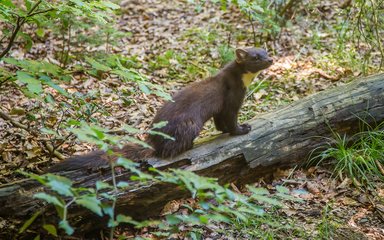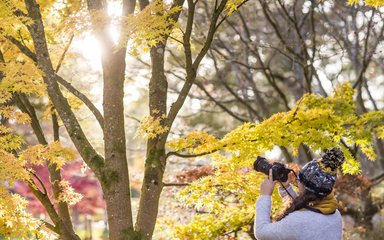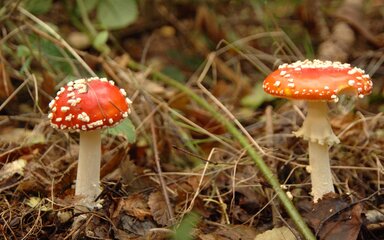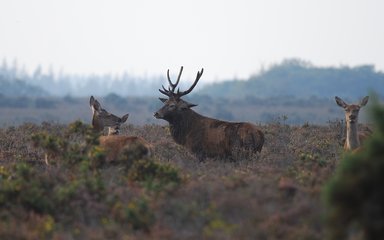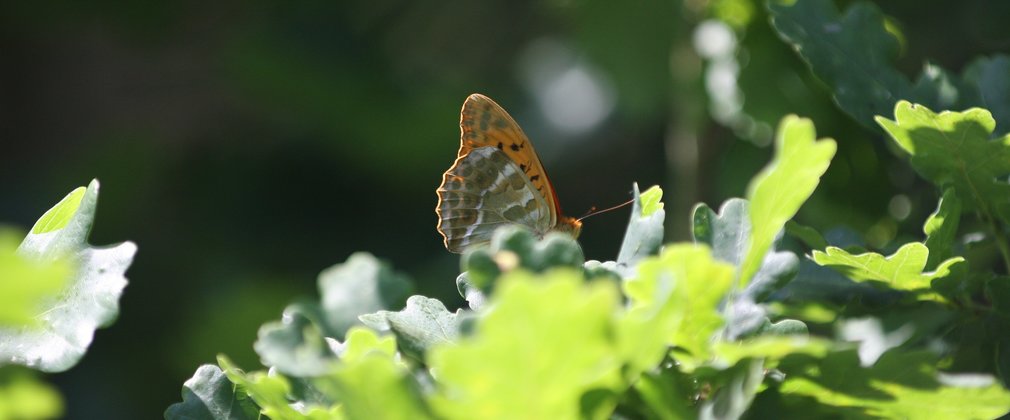
Woodlands provide a place to breed for three-quarters of England’s butterfly species. Find out the best places to spot butterflies and discover how we've been working to protect them.
Over the last century, many of our beautiful butterflies have sharply declined in numbers. Less connected habitat, lack of woodland management and a changing climate are all thought to contribute. We’ve been working alongside partners and dedicated volunteers to boost butterfly habitats in the nation’s forests.
Managing woodlands for butterflies
Many butterfly species are connected to the long history of humans managing woodlands for their resources. The nation’s forests, managed by Forestry England, are a patchwork of different habitats at different stages of the forest’s lifecycle; as some areas are felled, others are being planted. This mosaic of habitats with regular management is key for butterfly lifecycles.
Openings in the forest, called glades, supply warm, sheltered spots for butterflies. Clearings where mature trees have been harvested allow caterpillar foodplants to grow. Thinning out trees, before they mature, also opens up the canopy and encourages other plants. We regularly cut back woodland tracks, known as rides, to stop them growing over.
A woodland with a mix of tree and plant species in various stages of life is not only important for butterflies, but vital for a host of other wildlife too.
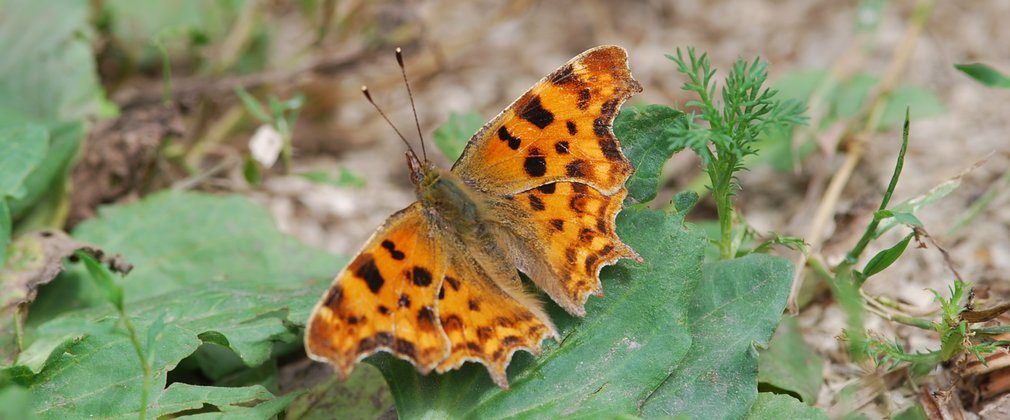
Where to spot butterflies
Sunny but sheltered areas are great places to spot butterflies, so woodland tracks and clearings are ideal. You can often find butterflies feeding on brambles in the summer. Some rare species use the tree canopy to feed, so you’ll certainly need your binoculars for that!
Common species to find
As the first warm days of spring arrive, you might spot an orange-tip in woodland glades. These are one of the earliest to emerge.
The dappled sunlight of rides is the perfect place to find a speckled wood. This brown butterfly with cream spots is one of the few species that has significantly increased in recent decades.
Another likely find is the comma (pictured above). This charming, raggedy-edged butterfly can easily be mistaken for dead leaves when at rest.
Most fritillary butterflies are also woodland goers. This group of highly patterned, orange butterflies includes the pearl-bordered fritillary and silver-washed fritillary.
Woodland glades and rides are also great places to see the chocolate brown ringlet, a basking gatekeeper and, of course, the stunning peacock with its distinctive eyespots.
Up for a challenge?
Discover these rarer beauties in the nation’s forests this summer...
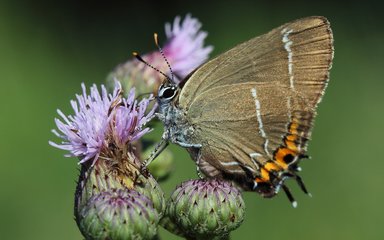
White-letter hairstreak
These butterflies rely on elm trees as the food plant for its caterpillars. Millions of elm trees have been lost across the UK over the last forty years due to Dutch elm disease, causing a massive decline in the butterfly too.
These little butterflies can be tricky to spot. Look up in woodlands with elm and if you’re lucky you may find them fluttering in the canopy.
How we’re helping
Working with Butterfly Conservation and supported by Forest Holidays, we have planted 50 disease-resistant elm trees at Basing Wood in Hampshire as part of a wider butterfly conservation project. White-letter hairstreaks have been spotted nearby, so we’re hoping to attract the butterfly and boost their numbers in the coming years.
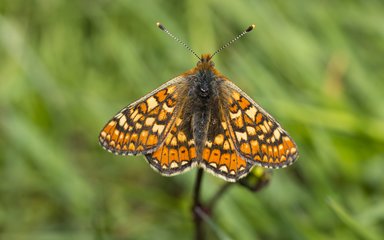
Marsh fritillary
This beautiful butterfly is brightly coloured and patterned, somewhat more than the other fritillary species in our forests. Once widespread, it is now mainly found in the west of England.
Look for the caterpillar's foodplant, devil’s-bit-scabious, which grows in lightly grazed or poor soil areas where more dominant plants don’t grow.
How we’re helping
Working with multiple partners at Ennerdale in the Lake District, the marsh fritillary has been reintroduced to Cumbria. Due to intensive sheep grazing, devil's-bit scabious was scarce but moving to carefully managed cattle grazing in the valley benefitted this foodplant. Ennerdale now hosts one of the largest populations of marsh fritillary in England.

Wood white
This dainty, white butterfly is sadly one of the country’s fastest declining species, with a few strongholds remaining.
Look for areas along grassy rides that have a mixture of sun and shade with plants such as common bird‘s-foot-trefoil and meadow vetchling.
How we’re helping
On the Shropshire and Herefordshire border, Mortimer Forest is an important site for round 30 different species of butterflies. Working with Butterfly Conservation, we’re maintaining and enhancing habitat to encourage foodplants of the rare wood white to grow.
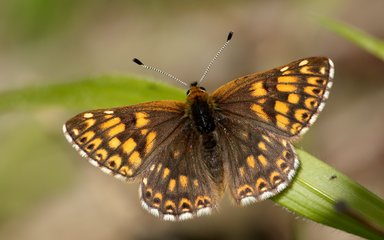
Duke of Burgundy
This enigmatic, small butterfly is one of the fastest declining in the UK and a high priority to save. Look for the woodland plants primrose and cowslip, where the adults lay their eggs.
How we're helping
Duke of Burgundy was historically recorded at Ellerburn Bank nature reserve in North Yorkshire, but thought to be locally extinct by 2009. In an area of Dalby Forest next to this site, we set out to create the right conditions for a reintroduction with Butterfly Conservation. We cleared an area of conifer crop, removed scrub and introduced conservation grazing with low numbers of cattle to encourage food plants. Amazingly, Duke of Burgundy were spotted on the site without being reintroduced! Numbers have slowly increased each year since.
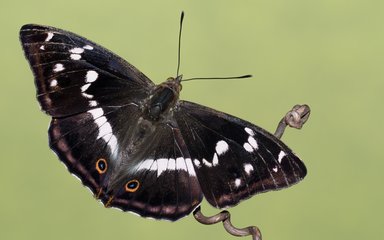
Purple emperor
One of our largest and most stunning butterflies, the elusive purple emperor is now largely restricted to woodlands in southern England. Goat willow is their main caterpillar food plant.
Another one for the binoculars, look up at the canopy and you might see their dark wings. If you’re lucky, you’ll catch the iridescent purple of the male, or even spot him feeding on the ground… on animal poo!
How we’re helping
Hampshire forests are a stronghold for these elusive butterflies, including Alice Holt Forest. As part of the Basing Wood project, we've also boosted butterfly habitat for purple emperor and many other species, including the rare grizzled skipper.
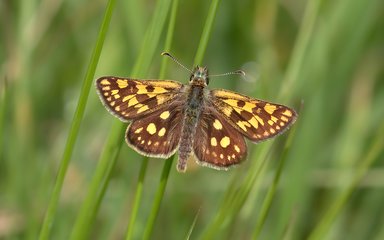
Chequered skipper reintroduction success!
The chequered skipper was previously extinct in England, since 1976. Working with Butterfly Conservation, we've reintroduced this butterfly to Fineshade Wood in Northamptonshire. Creating the ideal habitat and adapting woodland management has been key to the success of this species reintroduction.
The population is now stable enough to visitors to catch a glimpse this year. These small, fast-flying butterflies are most likely to be seen perching in sheltered positions next to wood edges or amongst scrub or bracken.
How can you help?
Help protect important butterfly habitat by staying on marked paths and keeping dogs on leads where necessary.

